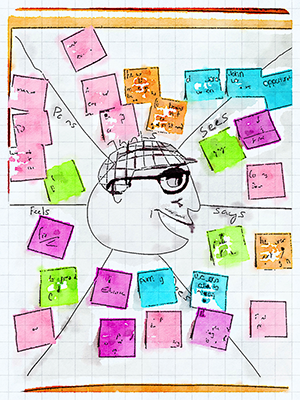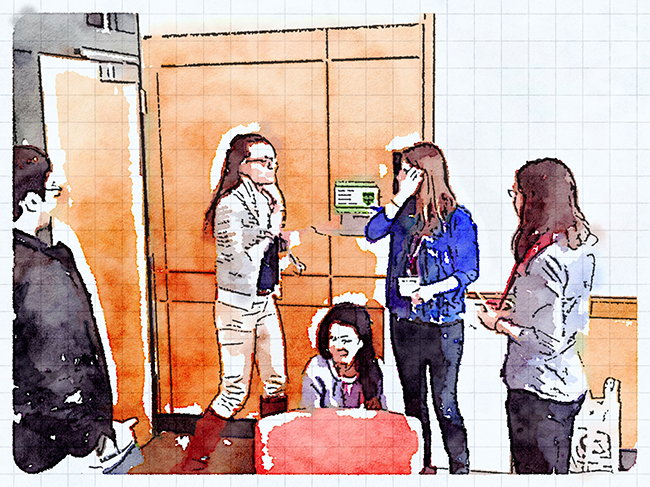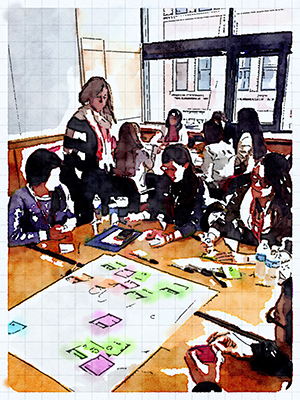Disclaimer: The statements and opinions expressed in this article are those of the author(s) and do not necessarily reflect the positions of Thoughtworks.

Recently some of my colleagues at Thoughtworks (@TheSubversiveBA, @JessicaKeeney) and I ran a workshop at Harvard's Women in CS WECode Conference. The conference turnout was 350 amazing and talented young women from high schools and universities in Boston and nearby states. Our three-hour workshop was designed to share some techniques for turning a great idea into a product concept that is ready to start developing.
Part 1: Who are you designing for?

Starting with an idea, “a mobile app for closed group communication," we gave each of the small groups a different Persona to design for. First we asked them to brainstorm the attributes of their persona, such as their name, age, background, personality traits and interests. Then we used Empathy Mapping to get them to step into the user’s shoes and think about what they See, Hear, Do, Think and Say, and their Pain Points. We chose to give the groups “extreme” personas -- an Athlete at the Winter Olympics and a Protester in Kiev -- so that their thinking would be stretched by unfamiliar users and scenarios.
Part 2: Building empathy / Understanding the user

Usually Personas are created and validated through User Research in the field. However since it wasn’t possible to do this in the workshop, we used another technique instead. Body Storming is a way of brainstorming user scenarios through role play. Participants build empathy for the user by putting themselves in scenarios the user may encounter and seeing what it feels like to experience those situations themselves. This exercise is a good way for teammates and other stakeholders who otherwise don’t have the opportunity to directly observe users to build empathy. After each 2-3 minute round of Body Storming the groups captured their ideas for the app based on the scenarios they had explored. This resulted in the teams coming up with product feature ideas that were shaped for their intended Persona and their particular contexts of use (the Winter Olympics and a protest in Kiev).
Part 3: Defining the core product features

Inevitably when building a product, teams are constrained by time, money, resources, etc and can’t build everything they want to at once. We introduced the participants to a game called “Buy A Feature” which is one way of getting diverse stakeholders to agree on a product’s core features and prioritize their importance. Buy A Feature gives stakeholders a fixed amount of money to spend which is much less than the total cost of all of the features they desire, and then forces them to negotiate and make trade offs to collectively decide which ones they will “buy” (ie build). This collective decision-making exercise can help to settle on a minimum set of core features as well as gain clarity around a shared product vision. Having reached this point, the teams had now turned an initial idea into a product concept which they could then start developing and testing.
At the end of the workshop the teams compared the different feature ideas they had come up with based on their unique personas. They explained why they had chosen certain features based on assumptions about their users and how those features would satisfy their particular user’s needs and contexts of use.
It was an absolute pleasure to attend and run a session at this first - and highly successful - inaugural event. There’s obviously a huge demand for “women in tech” conferences for those who can’t attend Grace Hopper. We are all looking forward to coming back next year and seeing it grow!
Disclaimer: The statements and opinions expressed in this article are those of the author(s) and do not necessarily reflect the positions of Thoughtworks.
